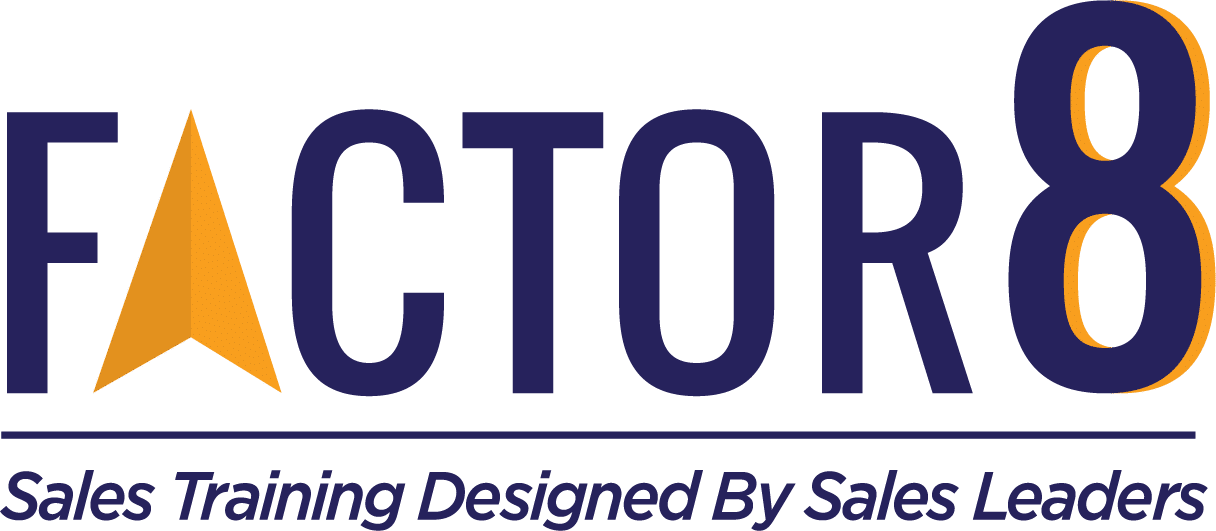Sales Rep Tips

Use This Simple Technique To Increase Close Rates
Want to increase close rates? Redefine what “closed” means!
Gone are the days of the one-call-close right? And what customer actually loved the days of ABC – Always Be Closing? What if I could show you a way to bring that back? Would you be interested? (and there I go, trial closing. I promise to stop. Hang tight, it gets better.)
(Psst! While you’re here, watch the recording of our recent session on “Tips to Transition to Close Fast“)
The idea here is that every call CAN be closed – just not for the sale. Indulge me in a sports metaphor (and prepare for me to mix it up halfway through):
Football. When we load up our BDR and outbound acquisition teams with lead lists and then count the appointments booked, we’re essentially only celebrating successful hail-mary passes. Picture your rep near your own end zone and winging it down the field for a one-in-a-million catch in the other end zone.
Maybe not one in a million…more like let’s say .6% or roughly two appointments booked in a week of sixty-dial days? Sound pretty close? Not a whole lotta touchdowns happening in this scenario, and really…how many of us have a team full of Bradys? (and seriously, even HE doesn’t have his contract renewed…but I digress)
Get A Commitment
What if instead, we instituted a first-down system in sales? Something that lets us make a shorter-yard play and then mark our spot on the field so that on the next play we weren’t starting from scratch?
Surely you’ve heard sellers lament the “starting from scratch” with leads right? Sure you called them three months ago and they told you to call back today, but did anyone actually remember you or what you sell? Here’s where commitments come in.
When we can get a potential customer to make a commitment to us on call one, we increase our mindshare with that lead. Sort of like sending an RSVP. Sure you don’t feel like going to the party when the date actually comes, but you DID send your RSVP that you’d be there, right?
I learned of this tactic from a restaurant. They had tons of no-shows for their reservations and were bleeding cash. My consultant friend went and did an analysis and added just two small words to the hostess’ script which made all the difference. Instead of saying, “Call us if you can’t make it,” she added the words, “will you” thereby gaining a customer commitment on the call.
By saying, “Will you call us if you can’t make it?” the customer responds with “Yes.” And again, even if he’s thinking of ditching the linen tablecloth for the couch and popcorn, he remembered that commitment and was TWICE as likely to either call or show. Massive change right? Mindshare.
Assign An Action
Now before you go and alter your scripts and training to reflect getting a “yes” from your customer, let’s make it even stronger. Give your customer an action item.
Let’s go back to the couch and the party. Sure you RSVPed, but you can probably still make excuses come Monday morning when you see your buddy at work right?
But consider: What if you signed up to bring the beer? Think of all your thirsty and angry friends waiting for you. Now THAT might get my behind off the couch and into the shower. You with me?
And if it didn’t work, the guilt certainly tripled. Same as the RSVP to the restaurant. I said I would call and I didn’t. It gives us a moment of pause. And next time we make a reservation, we might even remember our experience shafting that hostess. Mindshare.
OK, let’s translate.
If we’re outbounding to a customer and don’t get the appointment/demo/stage 2 win of the sales process, what CAN we get? We call these short-yard or mid-yard plays. Some examples:
- An appointment for call #2
- A commitment to check our current contract for the expiry date
- An agreement to read the study we send before the next call
- A promise to ask the rest of the team what they think of the current provider
- A commitment to take my next call
You’ll notice some of these wins are bigger than others, but they all include the customer saying yes, and the strongest ones give them an action. During training, we come up with our list of plays and then listen to calls together and vote on what commitment we’d use if our hail-mary falls short. Try it out!
Remember, the worst that can happen is your customer flakes and stays on the couch. But your odds of him remembering who you are and what you do (and feeling JUST a bit guilty about it) on the next call has definitely increased. Follow these tips and you’re sure to increase close rates in no time.
Subscribe to our email list to receive new content, webinar invites, and training offers.
Field Selling vs. Inside Selling: How to Excel in Different Sales Roles [“Sales Shot” Workshop Recording]
Field Selling vs. Inside Selling: How to Excel in Different Sales Roles
[“Sales Shot” Workshop Recording]
Learn more about the sponsor of this event!
Need help adapting to the new remote selling world? Request a demo of Outreach, the #1 sales engagement platform that closes more deals faster — so your reps can achieve revenue goals from anywhere. Companies that choose Outreach can expect a 387% return on the investment over three years and an 11% increase in sales productivity (valued at $6.9M). See what the #1 sales engagement platform can do for your business today.

Tips for Sales Reps to Get a Promotion
Truth: 9 out of 10 sales leaders have had the experience of promoting the wrong rep into management. If you’re a sales rep working on a promotion, read these tips to make sure you’re not one of the reps who shouldn’t be in management.
Tip #1: Be above quota. If you want to lead and teach reps to hit quota, don’t raise your hand if you haven’t hit or beaten quota for at least 12 straight months or 4 quarters.
Tip #1a: Don’t be the top rep. If you’re consistently smashing quota, rethink management. You’re the number one mistake, my friend. That’s right you special snowflake, most of the managers I met who were top reps are miserable. You also have more trouble teaching new reps how to be awesome. Why? Because you’re so damn good it’s an art to you – harder to teach an art than a science. Also, you’re wired to win at all costs, and in management, the job is about helping your team win. You’ll also make less money. Yeah I know, I should have led with that.
Tip #2: Process wins. A hiring director wants to see that you have a system in place for how you:
- Attack a list of leads
- Document your actions in CRM
- Penetrate new accounts
- Approach your day
- Onboard a new account
Fill in your own blank here, and do it several times. And if you aren’t asked about this in the interview, bring it up.
Tip #2a. Document that process and hand it in. “Here’s how I approach ABC. I’ve documented it to help some of the new hires.” Boom! Winner!
Tip #3. Actually go and help the new hires. Every team of sellers has a de facto leader. No, not that person who wins every contest, the OTHER person who you go to and who actually answers your questions. The nice and helpful one. THAT’s the future manager of the team. Be them.
Tip #3a. Be a mentor. Ask your manager to assign you as a mentor to newbies on your team or others. Being a mentor for 6 months is the number one way to find out if management is a gig you want. If you don’t enjoy it, that’s your sign it may suit you more to be in control of your own success and commission as a next-level seller vs. manager.
Tip #4. Go Pro. Ask a friend or mentor to review ten random emails you’ve sent to customers or internally and give you feedback on the professionalism of your communication. Nobody is going to hire the master of misspelling or the novelist. Bullet points. Clear. Direct. Grammatically perfect. Completely auto-corrected.
Tip #4a. Now go make them all 30% shorter. Make your subject lines actionable, speak in bullets vs. paragraphs, and have a clear call to action at the end.
Tip #5. Network now. The time to start talking about career moves, desires, and paths is about a year before you probably want it. Do all the managers know your name? How about the directors? When the VP asks who is on the shortlist of folks wanting to move up, are you 100% positive you appear on that list? If not, start booking some lunches or virtual coffees. Start by sharing your desire to grow and asking for advice on how to work to get there.
Tip #5a. Speak up! Ladies, do this 11.5 months before you’re comfortable doing it. The whole reason I started #GirlsClub was to help us level the playing field, and I need your help by actually getting on the field. We’re historically the last to apply and raise our hands – and then we’re upset for not being approached or chosen. That happens because we wait and wait and wait to speak up. Learn more and maybe even participate in our management certification at www.WeAreGirlsClub.com.
Looking for sales rep training?
We’ve got your back! Contact us today to learn about our customizable virtual sales training programs
available for reps (and managers).
One-Two Punch: Email + Voice Scripts That WORK When Prospecting [“Sales Shot” Workshop Recording]
One-Two Punch: Email + Voice Scripts That WORK When Prospecting
[“Sales Shot” Workshop Recording]
Learn more about the sponsor of this event!
Need help adapting to the new remote selling world? Request a demo of Outreach, the #1 sales engagement platform that closes more deals faster — so your reps can achieve revenue goals from anywhere. Companies that choose Outreach can expect a 387% return on the investment over three years and an 11% increase in sales productivity (valued at $6.9M). See what the #1 sales engagement platform can do for your business today.
Help! Should I Be in Sales Management? [“Sales Shot” Workshop Recording]
Help! Should I Be in Sales Management?
[“Sales Shot” Workshop Recording]
Learn more about the sponsor of this event!
Need help adapting to the new remote selling world? Request a demo of Outreach, the #1 sales engagement platform that closes more deals faster — so your reps can achieve revenue goals from anywhere. Companies that choose Outreach can expect a 387% return on the investment over three years and an 11% increase in sales productivity (valued at $6.9M). See what the #1 sales engagement platform can do for your business today.

What Is Virtual Inside Sales vs. Field Sales?
If you’re making the jump into sales, you are probably trying to understand the different roles and how they fit into the bigger picture. You might be asking yourself “what is virtual inside sales” or “what do field vs. inside sellers do?” Titles change, responsibilities overlap, and once you’ve read your 10th job description everything starts to sound the same. It can be confusing, I get it. So, why let’s talk about the two major segments of sales: field sales vs. virtual sales (aka inside sales).
Let’s be clear, we’re not talking about the retail sales job you had at the mall. We are talking about sales positions that lead to lengthy (and lucrative) sales careers. We’ll go over what each team does and which scenarios fit them best. Let’s get started!
First, here’s a little background on me. I grew up in the sales world. I have been a virtual salesperson, a field salesperson, a sales manager, a sales leader, a training leader, and now an entrepreneur. If it has happened in the world of sales, there is a VERY good chance I have seen it, been a part of it, or at least provided some guidance on how to handle it. Okay, enough about me. Let’s talk about field sales and virtual sales.
What is the difference between sales roles? Which should you choose? Why would companies need different types of sellers? All great questions, keep reading for answers…
Historically, there were two sides to the sales coin, virtual (inside) sales and field sales. Many years ago, virtual sales reps were the 22-year-olds fresh out of college. They were green, they were underpaid, and they were trying to navigate their way through the sales world, but they were working 9-5 in an air-conditioned office. On the other hand, field sales reps were the tenured, respected, distinguished, and WELL-paid sales professionals that we all aspired to be. The field reps were wining and dining, jet-setting, and making the big bucks.
Today though, the lines between sales teams have blurred. Some companies have a virtual sales hand-off to field sales. Some have field sales teams that revolve around, or report to, virtual sales leaders. Others have only one type of sales team, either virtual or field sales. Many companies have even begun equalling the compensation between the two teams. Gone are the days when the field seller made all the money and the virtual seller made base.
In today’s sales world, most companies build and shift their sales teams based on what is required to make the sale at any given moment. Is the product brand-spankin’ new to the world? Is it something that people have heard about and have a general understanding of? Is it something that the consumers know like the back of their hand?
All products go through a life cycle:
- They start out in discovery, where no one knows about them.
- They move into introduction and growth where consumers are aware they exist but haven’t made the purchase yet.
- Then comes maturity and saturation where consumers know all about the product, and the market starts to become flooded with competitors.
- The final stage is decline where companies need to dial back the overhead (aka salespeople) to bring prices down and compete in a saturated market. It’s in the decline life cycle that we usually see companies move their sales offshore.
Okay, now that we know about the product, let’s talk about who sells it.
What is Field Sales?
The field sales role is one of education and extensive knowledge. Discovery is the ideal product life cycle for this role. Their sales cycle is typically long, their price point is high, and their consumer is in need of either the salesperson’s education or expertise.
Here’s an example: let’s say your company is launching a brand new product to the market. I’m talking about something that no one has ever seen before. It’s something that your potential consumers don’t even know they need yet. This type of new product will require your salespeople to be very hands-on, providing A LOT of education. The sales cycle is often 6+ months long and each deal will require a good amount of guidance. In this scenario, Field Sales is queen (or king).
Pharma is a great example of an industry that is continuously launching a brand-new product (medication). Each new drug that comes out requires education for the doctors, nurses, and pharmacists that will (hopefully) be prescribing and providing the new drug to patients. Pharmaceutical sales reps will (almost) always be field sellers.
Field sales can also dip its toe into the introduction life stage, in the right scenario. A perfect example is custom-built pieces. Let’s say your company sells large-scale automated machinery.
If a customer is looking to replace or upgrade a machine on their production line, they can’t exactly order it on Amazon. This type of sale requires a salesperson to come onsite, understand the whole production line, measure the available space, and then provide the right recommendations for both seamless integration and price point. This is not a couple of conversations that end with the customer signing on the dotted line. This is months of calls and visits before the deal is closed.
What is Virtual Inside Sales?
Now, let’s talk about virtual or inside sales. Unlike their on-site colleagues, virtual sales teams work with customers, well, virtually. This means their interactions with the customer are on the phone, via email, or online. The inside sales role is about further explanation instead of total education. For these roles, the sales cycle is considerably shorter, maybe 1-2 months, and the consumer usually arrives with some understanding of the product or its use.
Thanks to the internet, a larger majority of products in today’s market fall to the virtual sales team. These products are typically in the introduction or maturity point of their life cycle. In these life cycle stages, the product is known to the market, it may even have competitors. People have heard of it and are searching for it, but not everyone has purchased it just yet. Maybe they’re working with your competitor, or they’ve been thinking about getting your product for some time but they haven’t had the budget. In this stage, the customer’s need for help changes from full education to further explanation. The virtual seller’s job is to help the consumer understand why your product is better and why they should buy from you.
Some great examples of this are IT products, like computers. Consumers will come to you with a basic understanding of what they need. The “sale” is more about helping them select the right model, the correct amount of storage, or choosing between a PC and a Mac.
I’m sure you’re saying to yourself, “virtual sales sounds way easier!” Before you make that decision, we should talk about the different experiences on the salesperson’s side. For field sales reps, if you are back to onsite visits, you have time to talk a little before your meeting, then you have an hour presentation, then you might have some time for water-cooler talk after, all before you take the client to a 2-hour dinner. In one short visit, you are getting anywhere from 1 ½ hours to 5 hours of valuable time with that client.
For a virtual sales rep to get the same 5-hour “face time” as a field sales rep, you could be looking at a series of 7-10 separate phone calls. Just getting the right contact on the phone is more challenging in the virtual world. Most virtual sales reps are making anywhere from 5-10 dials for every connection. Think of it this way: it’s easier to not answer, or hang up the phone than it is to dismiss someone standing right in front of you. Once the virtual sales rep finally gets the contact on the phone, they also have less time to ‘hook’ them. A virtual talk track has to be short and to the point. Unlike their field sales counterparts who have anywhere from 30-60 minute presentation times, virtual sales reps have MAYBE 10-15 minutes to get to the value AND bridge the client to the follow-up call. It means those virtual sales reps have to do their discovery homework and have to craft their message with the client’s needs at the top of their mind.
Whether you’re hiring sales reps or job searching for a field sales or virtual sales role, I hope these nuggets of information helped you!
Want more information on transitioning field reps to virtual inside sales?
Contact us today to request information on our customizable virtual sales training programs
available for reps (and managers).

Quick Tips for Running an Engaging Virtual Sales Demo
Don’t forget the cardinal rule of virtual sales demos: Give a custom sample, not a full tour!
Imagine you are a nervous flyer. You reluctantly board your first flight in years, and the pilot invites you to look at the cockpit. You must really be vibing terror, right?
As you walk in, you see panel after panel of knobs, levers, & buttons (oh my!). Every surface. Two sides. Even the roof has switches.
This isn’t helping.
The co-pilot looks 12 years old.
Is that coffee sitting on the instrument panel?
Is that display SUPPOSED to be flashing!?
As you tune back in, you’ve just been asked a question. Wait, he’s been talking? What did he ask? You think it was something like, “What can I show you?”
Um, shouldn’t he KNOW!?!
Ok, think! Your brain catches up to your mouth as it forms the words, “How about the safety features?”
Yes. Perfect. Show me what happens if you keel over dead, or a fuse blows, or we hit a flock of geese (are your hands actually sweating now?)
Can you feel me here? I’ll stop with the extreme example to make my point. You, dear nervous flyer, do NOT want a button-by-button explanation of how this 20-ton machine will suddenly take flight.
You want some reassurance!
You want to feel better about your safety!
You want a kindergarten-simple overview of your safety, am I right?
Your prospect may not be a nervous flyer – or even a nervous buyer – but I guarantee they also don’t want a button-by-button tour. Let me repeat for effect:
Prospects don’t want full-blown tours.
In fact, if you’re giving the same demo several times a day, you’re doing it wrong.
Prospects want a custom sample of your product or service based on their needs, their challenges, and their goals.
Here’s the good news: Your demos will take a LOT less time.
Here’s the bad news: You’ll spend that time in demo prep.
And the result? Better conversations during show and tell. Deeper discovery, more agreement, and higher engagement. That equals higher close rates.
Subscribe to our email list to receive new content, webinar invites, and training offers.
10+ Tips to Build a Human Connection on Sales Calls [“Sales Shot” Workshop Recording]
10+ Tips to Build a Human Connection on Sales Calls
[“Sales Shot” Workshop Recording]
Shout out to our event sponsors!
How to Use Storytelling to Engage Prospects and Customers [“Sales Shot” Workshop Recording]
How to Use Storytelling to Engage Prospects and Customers
[“Sales Shot” Workshop Recording]


